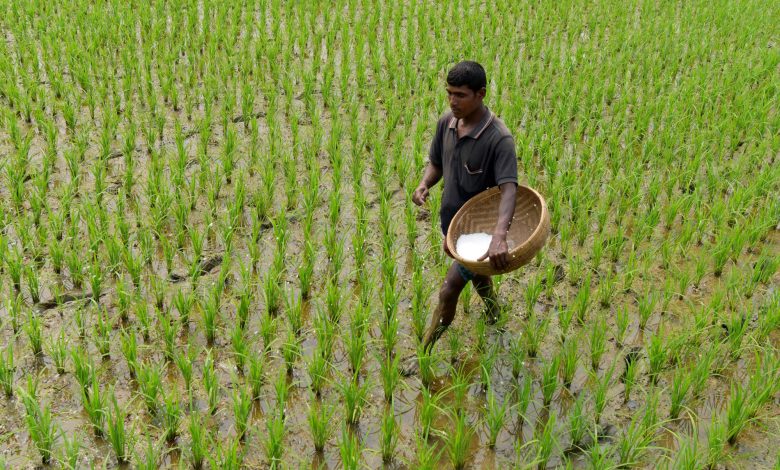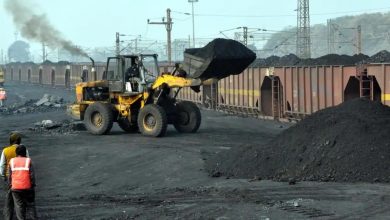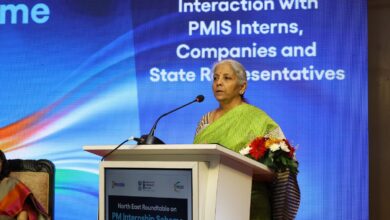Fertilizer Sector: Crisis Demands Strengthening Domestic Production Through PSUs
This is a detailed report on the sector compiled by Peoples’ Commission on Public Sector and Public Services

A spurt in global demand for fertilizers after the pandemic from most agrarian countries including US, EU, Brazil, China and India, has already upset the availability and price level of mineral fertilizers all over the world. An increase in natural gas price, the Chinese government’s ban on the export of fertilizers and the Ukraine war have reduced the production and movement of fertilizers at the onset of the sowing season in different parts of the world. As Svein Tore Holsether, President and CEO of Yara International, one of the world’s biggest fertilizer companies which operates in more than 60 countries, commented, the Ukraine war is going to have a catastrophic impact on the already challenged global food production system due to climate change, growing populations and the pandemic which may result in a massive increase food insecurity in poorer countries
India’s food grain production touched a remarkably high 308.65 million tonnes during 2020-‘21. Almost 50 to 55 % of the additional grain production is directly contributed to the application of mineral fertilizers which played a major role in the success of India’s green revolution starting in the 1980s and helped the country to attain food self-sufficiency by 2000. As a result, since then, the demand of fertilizers has witnessed significant year-to-year growth rates over the past several years on account of which the domestic industry expanded and also led to huge imports of products and inputs that are not domestically available.
Present situation
Today India is the second-largest fertilizer-consuming country, the third-largest producer and the world’s largest importer of fertilizer materials. Still, the per hectare application of mineral fertilizer in India remains much lower than in most of the developed and emerging economies.
India Fertilizer Scene: 2020-‘21
World’s 2nd largest Consumer: 32.55 MMT ( N+P2O5+ K2O)
World’s 3rd largest Producer: 18.48 MMT ( N+P2O5)
World’s largest Importer 10.90 MMT ( N+P2O5+ K2O)
Nutrient Production Import Consumption* ( MMT)
N 13.74 5.66 20.41
P2O5 4.74 2.55 8.98
K2O – 2.69 3.16
Total 18.48 10.90 32.55
*Higher consumption is made up from available inventory.
In the last 30 years, consumption of fertilizer materials was growing at a CAGR of 3.3 % whereas production grew only by 2.18 % necessitating huge imports which grew at an astonishing 5.81 % ( barring potash which needs to be essentially imported as we have no domestic resources ) during the same period. In the last decade since 2011-’12 production grew only by 1.13% CAGR.
In 2016, the Modi Govt decided to revive the five closed down public sector urea production units at Ramagundam , Talcher , Gorakhpur, Sindri , and Baruni . This situation is likely to get better with the commissioning of the five brownfield urea plants now under construction which may happen by end of 2024. Once these units become fully operational they will supply around 63.5 lakh MT of urea which will substantially reduce its import. Besides once the coalbed methane supply to the Matix urea plant is streamlined and PPL’s expansion of DAP/NP takes place it will also better domestic availability. Taking all things together, we find that in order to assure the ready availability of fertilizers, imports will continue unabated at least in the near term.
Imports: Country of origin
During 2020-21, India imported 203.3 lakh MT of fertilizer materials. 98.3 lakh MT of urea was imported mostly from China, Oman, Egypt, Ukraine, UAE and Indonesia. It also imported 48.8 lakh MT of phosphatic fertilizers from Saudi Arabia Morocco, China, Russia and Jordan and 13.9 lakh complex fertilizers mostly from Russia, Indonesia and Saudi Arabia. As regards potash, the imported quantity during 2020-’21 was 42.3 lakh MT mostly from Canada, Belarus, Russia, Jordan, Lithuania and Israel.
Regarding fertilizer intermediates, during 2020-’21 India imported 24.16 lakh MT of ammonia from Saudi Arabia, Qatar, Ukraine, Egypt, Turkey, Indonesia, Iran and Oman. India also imported 25.1 lakh MT of phosphoric acid during the same year from Morocco, Jordan, Senegal, and Tunisia. Apart from the above, during the same year, India imported 77.34 lah MT of rock phosphate and 14.63 lakh MT of sulphur for use in the fertilizer plants. Most of the rock phosphate was imported from Jordan, Morocco and Egypt and sulphur from Qatar, UAE, and Oman.
Evolution of the crisis
Following the retention pricing policy (RPS) and the encouragement given to public and private companies in the 1980s and up to 1995 the country attained self-sufficiency in urea production in the year 2000. During this period fertilizer production which was mostly a public sector manufacturing activity slowly drifted towards the private sector following lack of expansion of public sector units and also due to the closure of some of the operating units.
In the wake of the liberalized economic policies, it was decided that no major government investment is needed in the public sector. Due to this change in government policy, there have been no major new investments since 1995 in the fertilizer sector. Since then, imports increased leaps and bounds to satiate the farmers’ demand. In the meantime, in 2002 several plants which operated on coal, naphtha, fuel oil, and lignite were closed down on account of high specific energy consumption and increased cost of production. This also reduced the domestic availability leading to higher imports.
Joint Ventures
Early 2000 govt of India encouraged fertilizer units to put up manufacturing facilities abroad where raw material is cheap and bring it to India with a view to reducing fertilizer imports. Subsequently, two ammonia /urea plants ( 9 lakh MT) were installed in Oman through a JV with IFFCO. Four phosphoric acid plants (a total of 18.15 lakh MT) were also commissioned in subsequent years through JVs involving countries Jordan, Morocco, Tunisia, and Senegal. The products from these units are exported to India. One of the JVs involving Jordan’s JPMC and SPIC, Tuticorin to produce phosphoric acid was dissolved in 2010 and thereafter it became a fully owned subsidiary of JPMC. However, efforts to procure and develop potash mines abroad did not bear fruit.
During the last two decades, there were several tinkering with the fertilizer policy, but none of them were able to infuse new investments in the sector or reduce the subsidy burden on the government. Some of the major private players in the fertilizer business also left the scene on account of unfriendly policies of the government and inordinate delay in the disbursement of subsidy amounts hitting them hard on working capital requirements. With the partial decontrol of pricing and introduction of nutrient-based pricing in 2008, the farmgate price of phosphatic and potassic fertilizers went up sharply and severely strained the farmers.
The government’s efforts to attain better nutrient use efficiency of applied fertilizers in the field based on nationwide soil testing and balanced administration of fertilizers did not gather momentum. Promotion efforts toward large-scale use of compost and farmland manure biofertilizers, fortified fertilizers, and micronutrients also did not succeed as intended. Though the sector underwent all the strains associated with the neo-liberal policies of the government, it could not transform itself by absorbing the new trends, scientific advancements and strategies which occurred in the production, crop nutrition and use of mineral fertilizers around the world.
Energy/ gas price rise since 2021
Globally, gas prices were on an increasing trend since June 2021 due to the demand surge post-COVID-19 and consequently, international fertilizer prices were also hardening. Early January 2022 ammonia prices ruled as high as $990 per MT, which was less than $300 per MT a year ago. A similar increase in prices was seen in the case of urea and DAP, major fertilizer materials imported to India. The price of natural gas produced by ONGC fields which are used to make fertilizers, generate electricity and provide CNG for automobiles, is revised every six months by the government. A 62% hike was imposed from $1.79 to $2.9 per million British thermal units in April 2021. Further it was raised to $ 6.1 per million British thermal units in September 2021. The restricted supply of gas forced the fertilizer and other consumers to go for high-cost imported LNG.
China’s ban on exports
China remains a major source of imported fertilizers for India with a share of 29% and 27% in import of urea and DAP respectively in FY2021. Both availability and prices were affected adversely following the suspension of fertilizer exports by the Chinese government in August 2021. Already supplies were restricted due to the pandemic and the demand for nutrients went strong from the US, Brazil, China and India resulting in international prices run up significantly since last year.
Impact of the Ukraine war
The Ukraine war that started in February 2022 has a catastrophic effect on the above situation already fuelled by China’s suspension of fertilizer exports. India’s dependence on the import of fertilizer materials from Russia, Belarus and Ukraine, as indicated above, are significant and so also the Baltic trading of these products. The war has threatened the availability of materials and driven the prices sky-high. The worst affected are the small and marginal farmers and the common people. For the small and marginal farmers, which constitute more than 80% of India’s agricultural sector, paying high prices for fertilizers in the black market will hurt their incomes. Further, if they opt to not use fertilizers, crop yields will drop substantially and will drive food prices higher and worsen the already high inflation, pushing 15% of the country’s poor into acute poverty and hunger.
Prices of phosphoric acid and rock phosphate, for instance, had increased by 92% and 99%, respectively, over the 12-month period till March 2022 and potassium prices have tripled in the past year over fears of looming shortages amid sanctions and logistical bottlenecks. This was against the overall expectation in the Indian industry that a 3% growth in demand for fertilizers and a fair moderation in the prices of raw materials during the second half of this fiscal. Last month (May 2022) in an attempt to ensure the supply of fertilizer products, a high-level delegation led by Dr. Mansukh Mandaviya, Union Minister for Chemicals & Fertilizers visited Jordan and signed MoUs with Jordan Phosphate Mining Company (JPMC) for supplies of 30 lakh MT Rock Phosphate, 2.50 lakh MT DAP, 1 lakh MT phosphoric acid for the current year with the Indian public, cooperative and private sector companies IPL, IFFCO. India also signed a long-term MoU for 5 years with Arab Potash, Jordan for annual supplies of 2.75 lakh MT of potash which will uniformly increase every year up to 3.25 lakh MT. In the current global situation, consistent supplies are crucial for the ensuing cropping season.
Impact of fertilizer subsidy
While inaugurating IFFCO’s Nano Urea Plant, the other day, Prime Minister Modi said that the prices of fertilizers have gone up sky high due to the pandemic and the Ukraine war. But the government will take all steps to make available fertilizers at affordable costs to the farmer. Fertilizers are heavily subsidized in India. The difference between the cost of production assuming a reasonable return on investment to the producer and market realization upon selling it at government-mandated prices (MRP) to customers is reimbursed as fertilizer subsidy as payments made to manufacturers. For imported material, the excess cost of import and distribution over a low maximum retail price (MRP) is paid to importers. Ever since energy and gas prices become volatile in 2019-20 the domestic cost of production and imported prices have gone up considerably resulting in a steep hike in the subsidy pay out. While it was Rs 83,000 crore during 2019-20, which increased to Rs 1.38 lakh crore during 2020-21 and to Rs 1.62 lakh crore during 2021-22. In the current situation, it is expected to cross Rs 2.5 lakh crore during the current FY 2022-23 which will certainly upset the fiscal balance of the union government.
Way forward
In the present situation, the cost of mineral fertilizers is increasing leaps and bounds and its availability is also threatened on account of global supply disruptions. At the global level, a sense of food insecurity is also forecasted in the long run by several informed agencies. We need to ensure both the availability and affordability of fertilizers at all costs to farmers to sustain food grain production. Therefore, we may have to reorient our current practices in the application of plant nutrients through mineral and chemical fertilizers.
In this respect, the following points may be considered.
1) In the wake of the Ukraine war, the much-criticized administered pricing system for urea prevailing since 1978, has come up to save the farmers and the industry in the country. Even the part decontrol of phosphate and potassic fertilizers also shielded the farmers from the huge price rise, these days, in the international markets.
2) The government shall have a steadfast action plan to increase in domestic production of fertilizers. As ammonia, the major fertilizer input is slated to become a fuel of the future for long-distance hauling, its production will serve the twin purposes of production of fertilizers and as a reserve fuel.
3) Preferential allocation of natural gas to the fertilizer sector may be restored. Now the sector gets domestic gas after allocation to household consumption and for automobiles
4) Do away with the privatization of PSEs in the fertilizer sector and undertake their systematic expansion and diversification.
5) More diligent use of available (indigenous and imported) urea and DAP is the need of the hour. The Govt has done certain efforts in the past years to achieve a balanced and scientific application of mineral nutrients in our farmlands. Here only partial success is achieved. A more concerted action plan for effective soil testing and fertilizer administration is warranted not only to conserve costly fertilizers, and reduce its waste but also to ward off its leaching and consequential environmental problems.
6) Low nutrient content fertilizers such as ammonium sulphate, mono ammonium phosphate may be promoted so that there is no excessive nutrient application and the plant absorbs almost all the nutrients supplied during the cropping season itself without any wastage.
7) Existing fertilizer plants may have the capability to produce beyond their nameplate capacities. Production beyond the assessed quantum was not encouraged earlier to avoid investors ‘gold plating’ to claim more capital subsidies under the administered pricing mechanism (APM). In the renewed situation all producers may be encouraged to produce whatever possible to tide over the prevailing exorbitant import prices, especially in the wake of the Ukraine war
8) Fast commission the urea plants under construction. Ramagundam fertilizers and HURL, Gorakhpur have started operations, HURL Baruni is expected by June this year, Talcher unit is set to become operative by end of 2024. Have a dedicated effort to fast-track the commissioning and operation of these projects
9) Urban and City compost may be given a renewed thrust to meet part of our nutrient demand. Encourage more and more municipalities and corporations to mandatorily implement such projects. This will not only render cities and neighbourhoods clean but also provide low analysis fertilizers for horticulture etc
10) Try blending Urea and DAP with city composts so that better assimilation by the plant is rendered easy. Indirectly it will reduce the wastage of concentrated fertilizers
11) Have a nationwide program to promote the use of agricultural wastes, green leaves and farmland manure as readily available sources of manure for crops
12) Promote an effective utilization of low-grade rock phosphate deposits available in the country (Rajasthan etc) through advanced beneficiation etc
13) Gypsum from salt pans contains several plant nutrients and is used as manure and also in cement plants. The use of this material as manure may be incentivized and instead cement plants may be directed to use phospho-gypsum or mined gypsum
14) The ammonia industry in the country has amassed vast expertise in the design, execution, handling, storage, and safety of handling hydrogen. This strength may be used and the fertilizer sector may give a responsible role in National Hydrogen Mission in its developmental efforts




